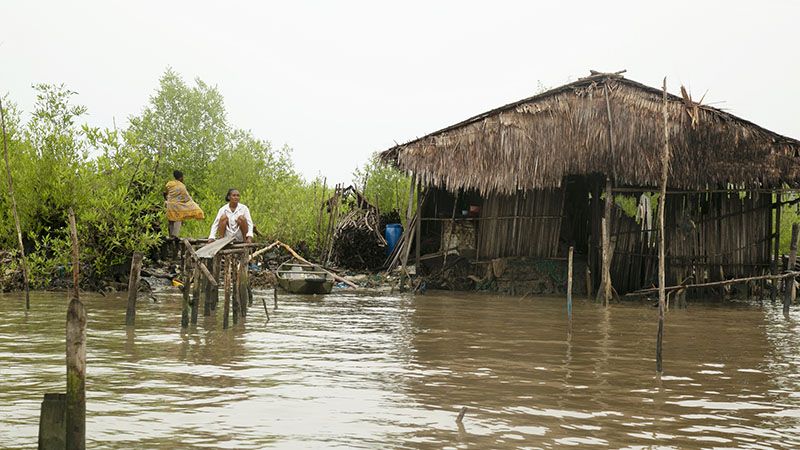The 48 countries most at risk from climate change form an increasing part of major global stockmarkets, new research has found, putting $1.14tn in corporate value at risk.
Risk intelligence company Verisk Maplecroft revealed the findings in its Climate Hazard and Vulnerability Index (CHVI).
See also: Sustainable funds suffer worst quarter of outflows on record
It found that second-order climate risks, such as economic and political instability, poverty, migration and food insecurity, could become highly impactful in 48 countries by 2050. This assumes an “intermediate emissions scenario” where global temperatures rise up to 2.7 degrees Celsius. In this scenario, the number of vulnerable countries doubles by mid-century, up from 24.
“Based on the current location of assets and market capitalisation valuations, the data shows a dramatic increase in the financial exposure of companies and investors in the S&P 500, DAX, CAC 40, Nikkei 225 and FTSE 100 from the current level of just $34.bn,” the research stated.
India looks especially vulnerable
India is particularly at risk, along with Nigeria, Kenya, Ethiopia, Bangladesh and Pakistan. Indonesia and the Philippines sit just outside the highest-risk category. Verisk Maplecroft highlighted the rising importance of India to global business, and its burgeoning status as an economic superpower.
Across the five stockmarkets, India is home to more than 95% of the assets currently hosted by countries categorised as ‘very high’ risk in the CHVI by 2050. It is home to $1trn in market capitalisation across the five market indices. Its vulnerability is driven by its dependence on climate-sensitive industries like agriculture, high rates of poverty, and the risk of drought and flooding. At $818bn, the S&P 500 stands out as the most financially exposed stock market to the risks of India.
“While many companies report on their physical exposure to climate hazards, lesser understood socio-economic factors do not feature as part of corporate strategies, creating a blind spot for long-term resilience planning,” said Will Nichols, Verisk Maplecroft’s head of climate and resilience. “As the severity of climatic events accelerate, socio-economic factors could pose as big a risk as physical disruptions.”
Western companies at risk
While Western companies headquartered in climate ‘safe havens’ might seem insulated, the global reach of operation footprints means threats to foreign operations should not be discounted, the research warned.
“Markets tend to price risk at the corporate level, yet climate vulnerabilities manifest where assets are located, not just where companies are domiciled,” added Franca Wolf, principal markets analyst at Verisk Maplecroft. “Rising exposure to the direct and indirect risks of climate change could threaten the long-term viability of investments.”
The Climate Hazard and Vulnerability Index evaluates 198 countries for their exposure to eight different climate hazards, the sensitivity of populations in terms of health, poverty and agricultural dependence and infrastructure, and the capacity of countries to adapt to climate change through economic resilience, the strength of institutions, and political stability.








